Hatcher Pass – Talkeetna
Drive up into the mountains
There is some blue sky and there is
sunshine!!! Perfect we are happy and start out our drive up into the mountains.
Soon we had to have a short stop along the little Susitna river: it is another
cute beautiful mountain river – and you can pan for gold and if you are lucky you
find some.
As we head up we have some amazing
views and then comes the turn off to the mine:
The Story of the Mine:
- the first gold was discovered in 1906 by Rober Lee Hatcher: his claim became later part of the Independence mine – other people also staked claims in the area
- in 1936 they established a tent camp and worked through the winter, in 1937 they started to construct a permanent camp at the Independence Mine, in 19401 the mine was at its peak with 204 men working here and they recovered 34417 ounces of gold – during the peak time the mine had 27 buildings
- The mine operated from 1936-1943 150.000 ounces of gold were recovered, it then shut down, re-opened in 1946 and closed permanently in 1951 because at that time it cost 45$ to get one ounce of gold and they only could sell it for 35$
- Before WWII it was after Juneau the 2nd largest hard-rock gold producing district in Alaska
- The mine had 10 miles of tunnel
- In 1974 it became a national historic site
- There are 2 kind of gold: 1)Placer Gold is gold freed by erosion, transported by water and deposited with sand and gravel in creeks as it is heavier, it accumulates in slow moving waters. This involves washing and gold panning. 2) Hard-rock gold: that is when Gold is contained in Quartz veins inside solid rock: this requires underground mining and a milling process
- Do you know where the gold comes from: millions of years ago the fluid gold went into cracks of granite mass called: Plutons – and those were forced upward by the tectonic forces: those are the Talkeena Mountains
- All the houses were painted in Aluminium paint with red trims – so they look friendly
- Food and all goods were quiet expensive as all got shipped from Seattle to Seward, by train to Wasilla and trucked up here. Twice a day the commissary was open for 2 hours each
- I think one of the most crappiest jobs was to be a mucker you shovel 8 hours a day – 7 days a week rock in a damp environment and only make 7.50 $ a day. And still it was required that they knew the difference between waste rock and ore – during they shoveled the miners blasted holes to set the dynamite.
We explore Independence Mine
It is super cold up here – so we
decided to put on warm clothes before heading out to the old buildings – which
are beautiful situated in the mountain scenery. During we explored the sun came
out more and it got kind of warm.
And the first we read on a sign is:
that July can just be as deadly as a winter in Alaska if you get hypothermia!!!
- Mine Mangers house: from 1939 is open and has amazing views (I guess everything here has amazing views) with a sunken living room and huge fire place it is a cool spot. It was also called the Big house, it even had a hot-water tank, fridge, electric range and a washing machine. In here we saw some of the drills they used to make holes so they could place explosives: they normally blasted at the end of their shift, so the dangerous fumes could clear before they came in to muck and load the rocks by hand
- New Cookhouse: it got built in 1941 as otherwise food got delayed because the old one was too small. Sadly we couldn’t go inside as it was closed but it has 20 tables and could seat 160 men. The cook lived on the 2nd floor. The basement storage could held 10 tons of potatoes. By the way they had a all you can eat and they had 3 meals a day.
- Apartment house: it had 4 apartments with a living/sleeping room, kitchen and bathroom: perfect for a couple
- Bunkhouse 1 & 2: It is interesting on how skinny they are and how tall – we wondered if that is because of the snow. In each lived 50-54 men in double rooms– they even had a big room where they showed movies. By the way those bunkhouses were the best accommodations among the surrounding 38 mines.
- Assay Office/Engineer Office: engineers mapped where quartz veins were and determined where to drill, in the framing shop they made the beams to support the tunnels. In the Assay office we saw some weird mining equipment, old-fashioned headlamps and drills., in here they also tested the or and did the Amalgamation: heating it to 375 C then the mercury vaporizes and a gold sponge remained. We also saw 40 different kind of stones – for me they are different colored stones.
- Mine loop: now we walked up on the hill – first you have an amazing view on the valley and the buildings, but also you can see the little waterfall better, walk into the tunnel, have nice viewpoints, see some super old train tracks, and walk around the whole “it was at one time the mill complex” – it was a super amazing walk with super nice sunshine a walk in the mountains with mine views – we loved it. Oh and they still had an old Mine train sitting on tracks here.
- Water tunnel: it was kind of cool to walk for a bit on the train tracks and the few feet inside one of the tunnels. It got built in 1941 – before all was transported with the aerial tram – after it everything went in and out by train – even the workers could take the train, it also improved ventilation
- Mill complex: I mean this is all in shambles – but it was once a huge building: Extraction – Sorting – Ball mills – Amalgamation – Flotation, that all happens here and guess what we have no clue what that all is, good there is a lot of reading here. The building is beyond repair
If you come to Alaska nearly
everything and every town is somehow related to the different gold rushes.
View from Summit Lake
Turning off we head onto the Hatcher
Pass: it goes up – steep on gravel – overall we go up to 3886 ft elevation:
Paul was a bit concerned about coming down – it didn’t really help when Gine
said it goes down on the other side in gravel. As we come to a lot of parked
cars – it is not really our cup off coffee to park that close to the steep drop
off – finally on the 3rd parking spot we found a perfect spot – and
see there aren’t we lucky it is right at the summit lake. One of those deep
blue lakes with snow on the edge and when walking up the little hill amazing
views down the valley. The mountains here are super wonderful green. I may
should mention that the road has a lot of pot holes – so we were sometimes super
slow –
Potholes along the Hatchers Pass
And now we go downhill: going down in
the gear – the road has lots I mean lots and deep potholes and it is not easy
to drive around them sometimes impossible as the road is narrow and drops very
steep on the side. The views were amazing – we so loved it. We stopped a few
times only to enjoy – at one time we said let’s have coffee in the sun and
brought out the chairs, but by then all the sun was gone covered by a huge
cloud. It clearly was one of our top drives.
As we slowly went into the Valley
along Willow river we checked for a few turnouts – at one time we were
seriously thinking if we should stay – driving through the river on the rock
riverbed in the middle – should we dare???? We decided on a not and drove the
rest of the gravel road. (Which the next day we decided was a good idea, so we
didn’t had to drive so much when the sun was shining, as well we got an amazing
evening in Talkeetna)
In Search for a Campground
Ok, so we didn’t want to stay to high
up, as it is still very cold in the mountain, and when we came down to the
creek, some of the spots were occupied. Gine found a few spots on the
Ioverlander, only the first one we didn’t like as it was in the forest and you
couldn’t see the river from the camper. One sounded perfect: as we came there
and found the road, the road was flooded and there were some cars in the water
stuck there – so we turned around, as we thought we saw a spot earlier, only we
discovered it’s a campground and we decided too pricy. We came through another
wildfire area with the white birch trees and all the pink fireweed – so beautiful
(and lots of really new houses).
So we ended up to drive all the way to
Talkeetna and Paul said we will find a spot there and see there we did!!! We
even will have good night music from the concert.
Supper in Talkeetna
I mean when we drove into Talkeetna,
this is one touristy little town, old log homes, lots and lots of restaurants,
food trucks, music – I think we have to have supper in town and watch people.
We found a parking spot and then walked up and down the main street and then
settled on getting a Salmon Burger… not cheap but yummy. And we were sitting in
the sun and could watch people which is even more fun.
Afterward a quick walk down to the
river and we couldn’t believe it: we did see Denali: which is by the way 59
miles from here. After we had enough of walking and downtown evening fun, we
went in our camper – parking near a super rough off-road camper….
The quirky town of Talkeetna
- Originally this is the land of the Dena’ina or mountain people and called the river K’Dalkitnu meaning “rivers of plenty”
- Here the Talkeenta and Chutina River joint the Susitna River
- Once it was a mining town and a trading post: long before Anchorage and Wasilla came to existence , during that time it was a tent city. From a railroad camp (at that time 1000 people lived here) to a public auction in 1919 held, when 80 lots sold for an average of 14.25 $
- when the parks highway opened in 1964 made it more accessible and in the 70s you could get a lease from the state to buy for fair market value
- It is today a national historic place with a lots of historical landmarks (overall there are 13 historic buildings)- many artists, crafters and musicians are here – and yes there are lots of gift shops
- If you discover a lot of little decorate wooden moose, that is the Summers “Moose Parade”
- Already in the 1950s glacier landings increased and it became the jumping point for adventure seekers If you want to climb the Denali – you come here
- today it is he home for around 900 people.
A walk through the “historic” town
We slept in, as Gine thought if we
want to see some action in the town then it is not that early. After breakfast
we walked around to check out some of the old historic houses:
- We first went into a small log cabin built around 1920 – the 2nd owner lived in it until 1975. Harry Robb who lived here never cooked but always walked to the Roadhouse for his dinner. When he died with no heir it was boarded up until the Historic society got the deed in 1990 and it was like walking back in time as everything was like it was in 1975: Wow in this small one-room house – that is so amazing, after knowing the story it becomes even more interesting
- The Old Dahl Cabin was built in 1916 from a guy from Norway who followed the railroad work to Talkeetna and was a railroad surveyor. It is a typical trapper cabin.
- The old schoolhouse: is where todays Museum is (no we didn’t go inside), in 1916 it was decided that a town needs a school but it was only in 1936 when it built and used as a school until 1972. There is evidence that the first teacher came to town in 1916 but at that time school was held in different homes. The Schoolhouse had the one classroom for grade 1-8 and also a living quarter for the teacher
- The Roadhouse: it’s an old historic roadhouse from 1917 – and it still looks like it, and it is still possible to stay overnight here – we parked right behind it
As we walked along we saw a lot of log
houses, sure some of them are not that old or original but super cute. There
are lots and lots of gift shops – one had some super cool pictures. There are
markets and food wagons… it is kind of cute – but then still it is only one
road so you see it all fairly fast.
We headed back down to the river: and
today we couldn’t see the Big Mountain, but we really were astonished on how
much water is in that river and how fast it goes down. It is July and rivers
are flooded here!!!!
I think we’ve seen all – time to head
out and go closer to the Famous Denali.
Alaskan Train
On the way out we saw the Alaskan
Train and decided perfect we stop, as soon as we went in the lot we got told it
is for busses only… ok, so we headed out parked on the other side of the road
and walked back over and see there as we were there another train came by – and
Paul heard his train whistle!!!

 Independence Mine State Historical Park Visitor Center, Alaska, United States
Independence Mine State Historical Park Visitor Center, Alaska, United States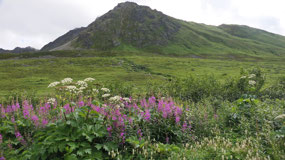
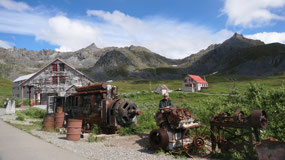
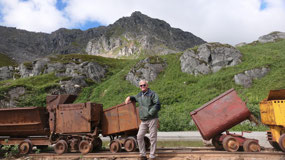
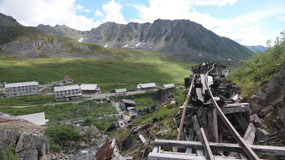
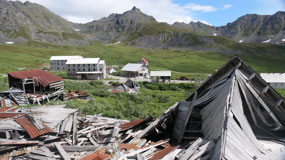
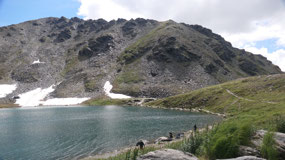
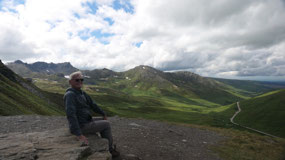
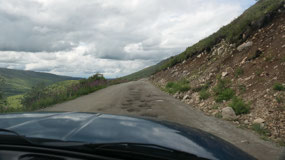
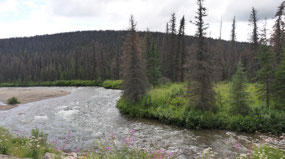
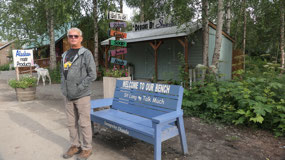
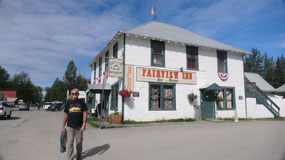
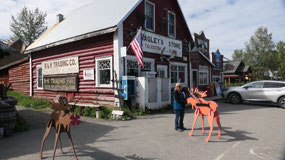
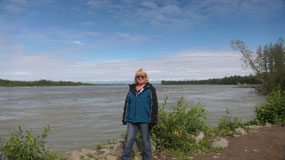
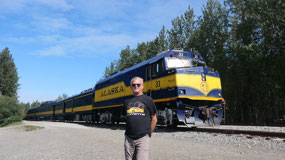


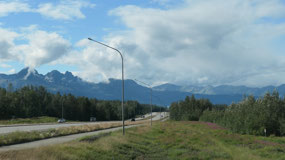
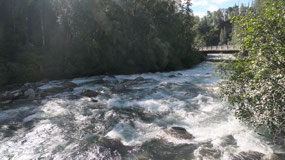
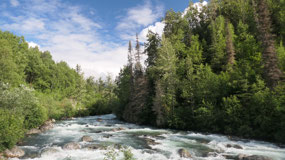
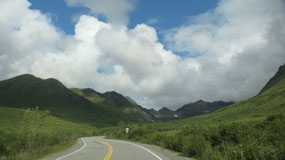
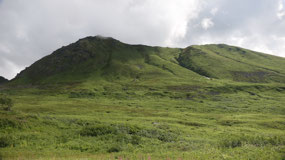
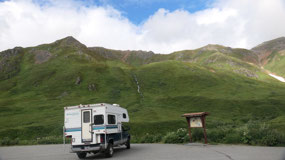
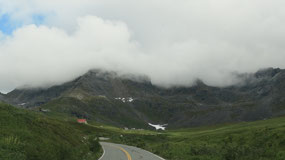
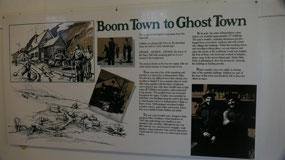
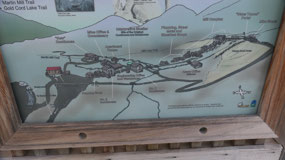
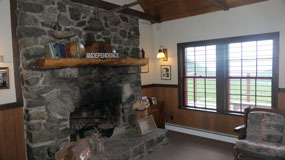
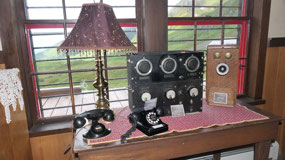
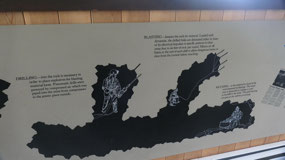
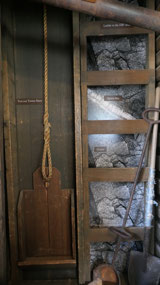
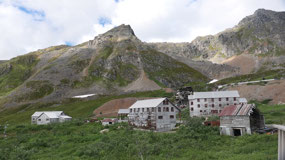
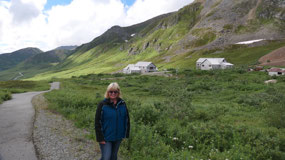

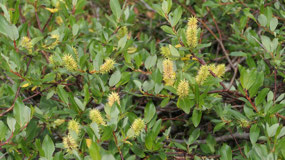
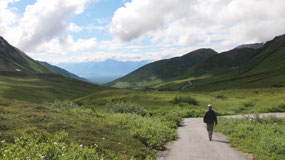
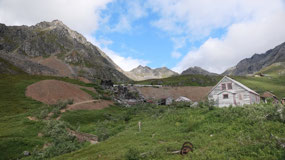
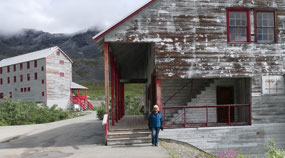
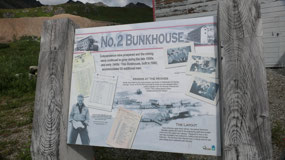
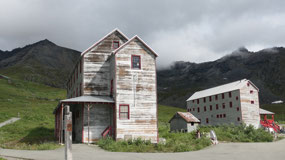
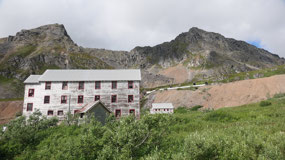
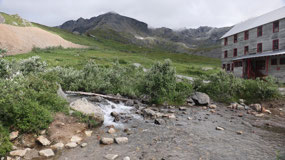
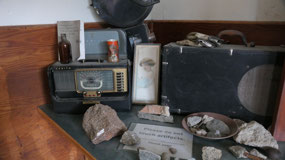
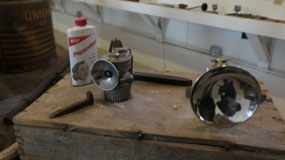
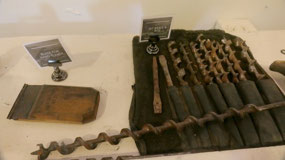
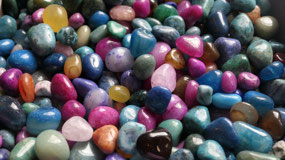
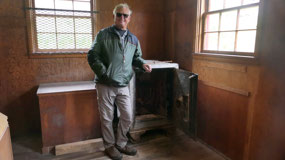
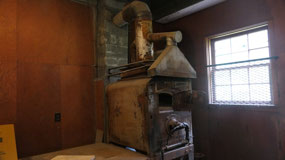
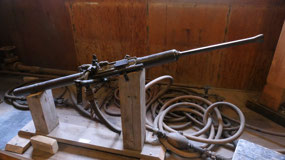
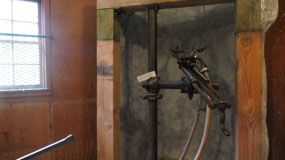
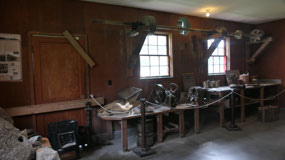
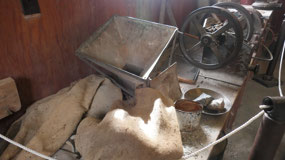
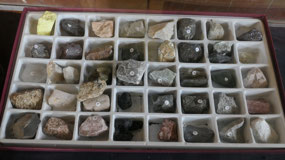
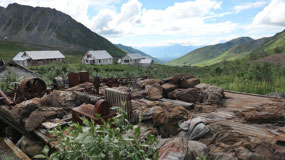
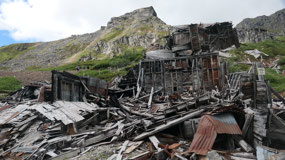
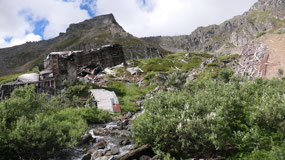
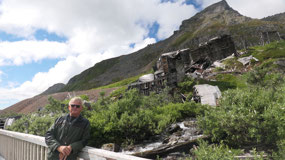
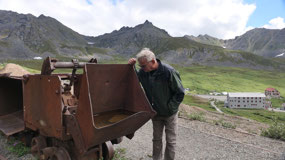
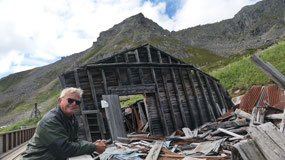
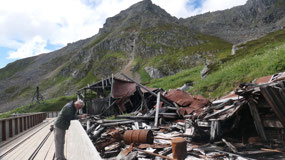
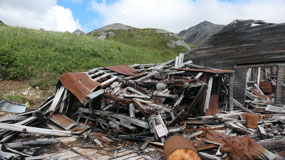
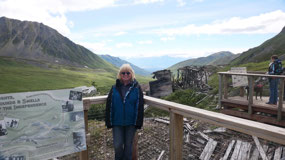
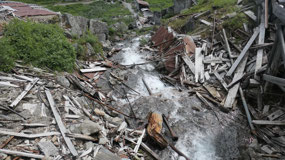
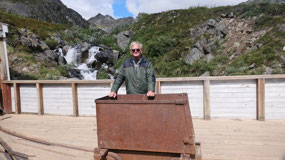
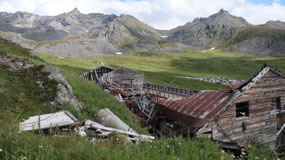
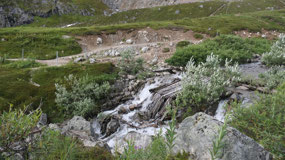
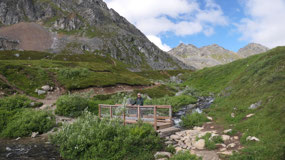


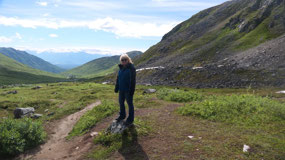
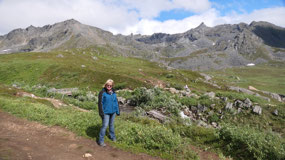
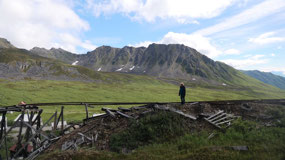
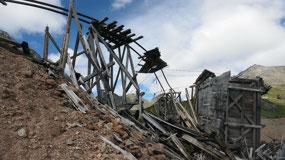
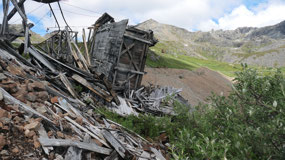
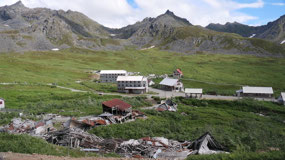
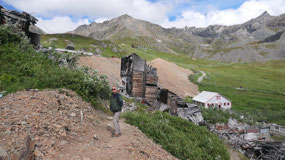
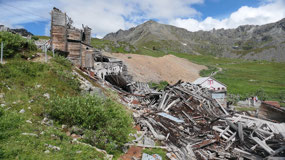
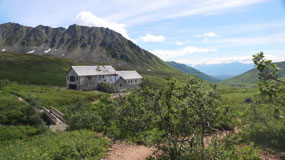
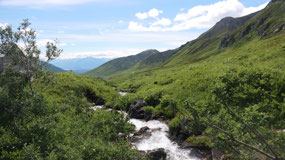
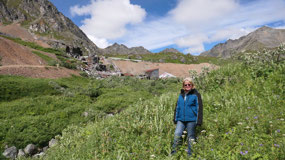

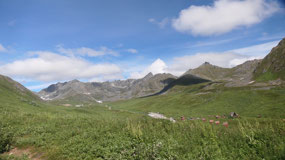
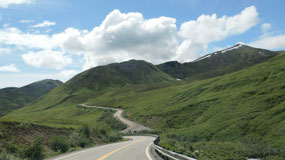
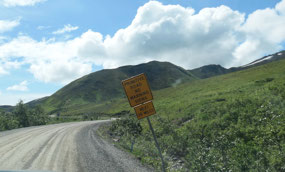

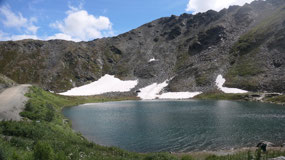
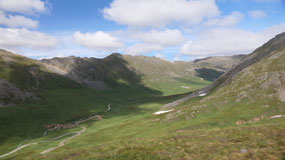
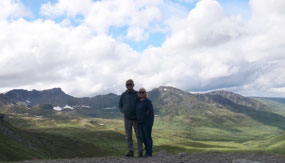
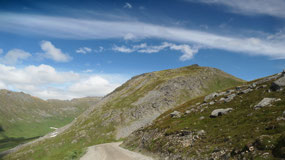
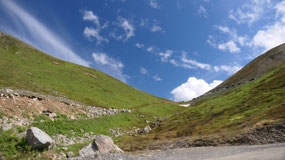
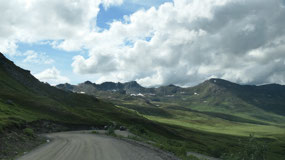

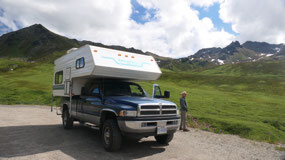
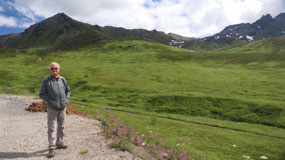
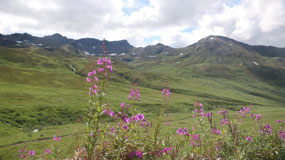
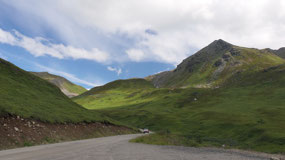
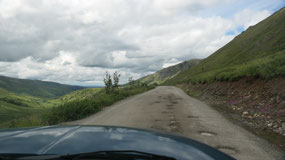
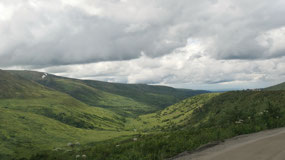
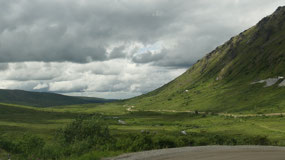
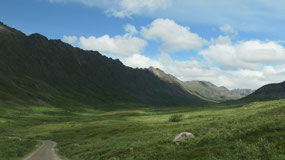
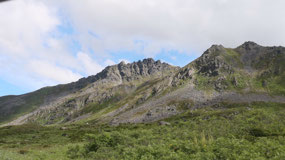
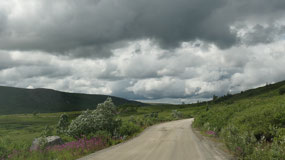
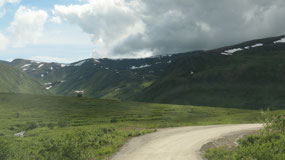
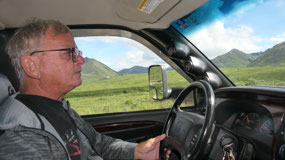
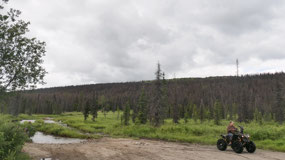
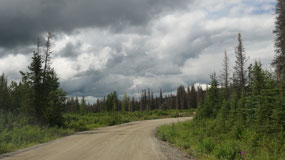
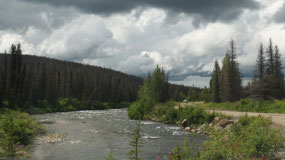
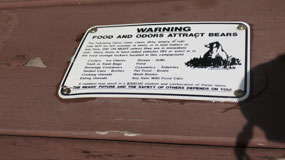
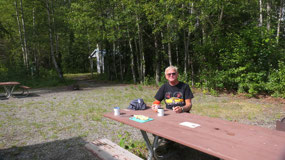
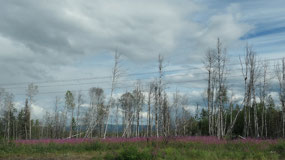
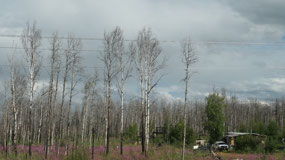
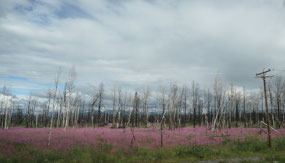

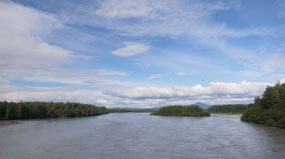
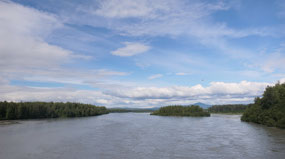
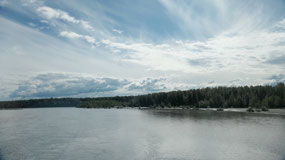
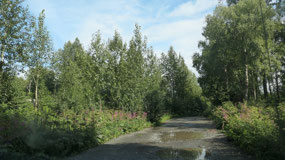
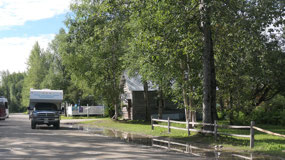
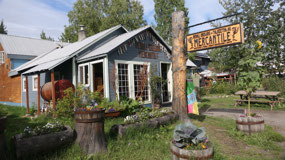
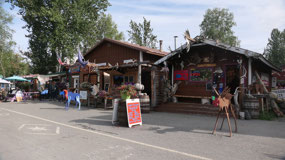
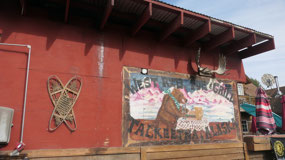

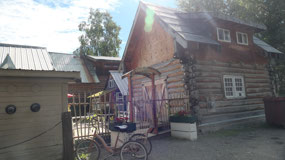
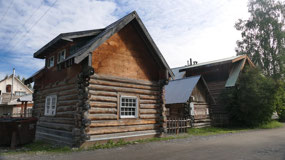
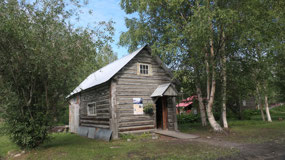
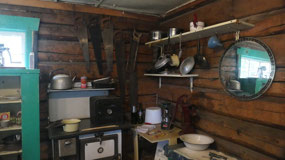


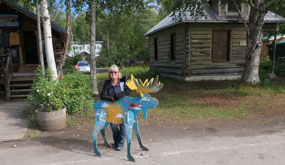
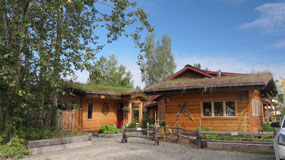

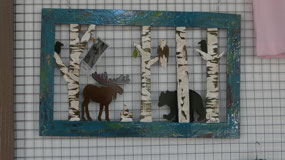
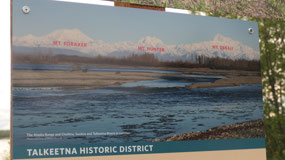
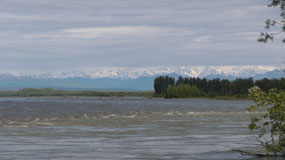
2025-05-22